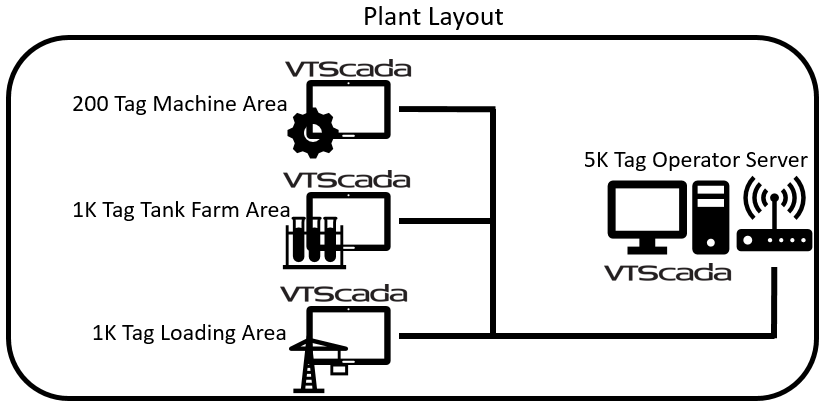When developing or updating a SCADA system, it is important to consider which devices it will need to communicate with, how and where the application HMI is required, as well as the disruptiveness of component downtime or missing historical data. With these items, one can start the process of planning their application architecture. Of course, it is good to consider that the architecture should be flexible enough to support the progressive updating.
Typical Systems – Basic Application Architecture
Before we get into any special architecture examples, it is important to understand the basics. The video below overviews VTScada’s basic system architecture, which is used by most customers. Watch the video below:
Paired Plants – Distributed Redundancy
If we can’t accomplish full redundancy in one system due to price or some other factor, it is good to consider taking advantage of VTscada’s area filtering and an unlimited number of historians. In the example below, we have a water and a wastewater plant, connected by a VPN. Using standard VTScada tools, we can have one large application which includes the tags for both the WTP and WWTP running at each site. Under normal conditions, each SCADA server is the primary for its own historian, dialing, and devices. However, in the case one system fails, the other simply takes control, having a continuously synced historians. With thin clients, the operators at the plant with the failed equipment can simply log back onto their system via a web browser to diagnose the failure. This scheme can also make management of user accounts and high level reporting easier.
Paired Systems – Streamed Redundancy
Using the same filtering tools noted above, it is also possible to create redundancy within one system where the different workstations have different numbers of tag requirements. You may have different areas within a plant which or monitored sites with their own HMI’s. These sites may lead back to a master control room SCADA server. In this case, the smaller systems will want to take advantage of less expensive tag bands while still being redundant systems for the equipment in their area. In the case there is a failure of the control room SCADA server, these systems will continue to monitor their equipment and will backfill the data to the primary servers when they become available again.
Paired Systems – Streamed or Distributed Redundancy
Stay tuned to learn more about the new Master Application feature coming in VTScada 12. This will bring the best of both the streamed and distributed redundancy features while allowing each site to have its own application rather than being part of a larger application. If you’d like to be among the first to learn about this upcoming feature, please subscribe to our newsletter using the link at the top right of the page, or click here.


